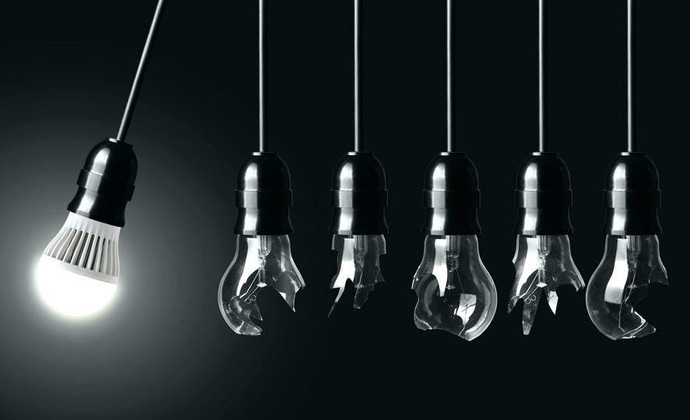Proper LED Disposal: Not as Hard as You Think
May 28th 2020
It is often the case that new technologies create new problems. The benefits are, if not outweighed, at least mitigated by the detriments. Big advances like the internet and nuclear power have some undeniable benefits, while also causing their fair share of problems. Before the internet, cybercrimes were quite literally unthinkable and while nuclear power eliminates the air pollution of coal-burning plants, the resulting toxic waste requires proper disposal.
Fortunately not all new technologies have these pitfalls. LED bulbs are a relatively new technology that continues to evolve. In 2017 29% of U.S. households reported having at least one LED bulb installed. That number has and will continue to increase. As more people replace their traditional incandescent bulbs with LEDs, what will become of the spent LED bulbs once it’s time to replace them?
On a superficial level, many households won’t have to worry about this too much. LEDs can last tens of thousands of hours, translating to decades of use in some cases without burning out. But, for the sake of argument, let’s discuss proper LED disposal. As the title of this article suggests, it really isn’t as hard as you think.
While incandescent bulbs can burst or fall and break, scattering glass everywhere, most household LEDs are made from plastic, meaning they can fall onto a hard floor and, while the plastic may crack, there is no dangerous glass to clean up. In extreme circumstances the plastic on an LED bulb can break. If that happens it can be cleaned up and disposed of like any other household waste.
Unlike CFL bulbs, Sunlake’s LEDs do not contain mercury, which means they can be thrown away with the rest of your household garbage. However, since these bulbs do contain recyclable electronic components, we strongly recommend recycling them. Your local waste disposal company should have information on its website about what materials it will accept. LED bulbs are often lumped into the category of “consumer electronics.”
In addition to waste removal services, some retail stores, especially those that sell electronics, will accept electronic devices including CFL and LED bulbs for recycling.
The EPA has strict guidelines about disposing of CFLs and other bulbs that contain mercury. If you are planning to replace obsolete bulbs with LEDs, you can read up on their requirements for proper disposal of mercury-laced materials here.
If you have additional questions, NEMA maintains an extensive resource with recycling on LampRecycle.org. You can also review regulations for commercial or residential lighting listed by state. Assess your home and start saving with the helpful resources on Energy Star’s website.
LEDs have many benefits over their predecessors. Not only are they less expensive to operate, use less energy, are durable, and and better for the environment, they are also the longest-lasting of all lighting solutions. Nearly all of Sunlake’s LEDs come with a 10-year warranty. That means you won’t have to worry about disposal for a long time.


